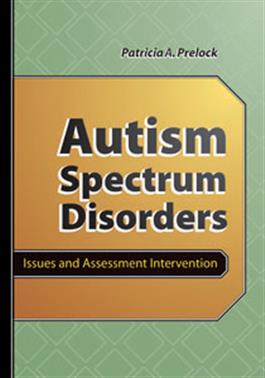
Autism Spectrum Disorders: Issues in Assessment and Intervention
Product Code : MPS8-11834
Vendor: Vasyli
Available
Description
Autism Spectrum Disorders emphasizes the roles of communication, play, and social interaction in understanding and managing the needs of children with autism spectrum disorder (ASD). This comprehensive text has two primary uses:
- as a textbook in courses dealing with autism and
- as a resource for families who are affected by ASD.
This book will appeal to all professionals who are preparing students to work with individuals with ASD and their families. Families affected by ASD who want to understand the core deficit areas for their children and what can be done to address those deficit areas will also greatly appreciate this thorough resource.
The book has two major sections: assessment and intervention. The discussion of assessment begins with diagnosis in Chapter 1, where issues of early identification, differential diagnosis, and neurobiological findings are considered. The World Health Organization framework guides the approach to assessment through the next several chapters. This framework was selected because it incorporates elements of both the traditional deficits perspective and the strengths perspective and considers factors both intrinsic and extrinsic to the individual. The most recent version of the framework, the International Classification of Functioning, Disability and Health (ICF), describes dimensions of disability (impairment, activity, and participation) that are affected by contextual factors. Each of those dimensions is considered as the reader learns about creating assessment profiles for children with ASD across communication, play, social, and sensory areas in Chapters 4, 5, 6, and 7.
The intervention chapters present models of intervention and specific strategies that have a solid theoretical foundation, have application to children with ASD across a range of ages and ability levels, and have some evidence of positive effects for children with ASD. Chapter 8 includes guidelines for considering the evidence and evaluating how practitioners might select interventions for individual children with ASD. The intervention chapters on communication, play, and social-emotional development, Chapters 9, 10, and 11, provide a comprehensive description of each intervention model or strategy, the intervention goals that might be considered, the perceived value for children with ASD, and the reported efficacy.
The chapters begin with 3 to 5 key questions that guide readers thinking. Those questions are revisited at the end of the chapter. Chapters also include a list of resources related to their content areas. In addition, each chapter contains a glossary of terms, some suggested readings, and a number of practice opportunities for the reader and learner to apply the information presented.
Reading this book will help you think about autism in different ways. Its content will help you acquire knowledge and skills that students and practitioners need to make a difference in the lives of children with ASD and their families. Professionals in speech-language pathology, psychology, education, early childhood, special education, social work, pediatrics, occupational therapy, physical therapy, nursing, and audiology will all find this to be a useful teaching tool and a valuable resource.
653 pages 7 x 10 hardcover 2006













